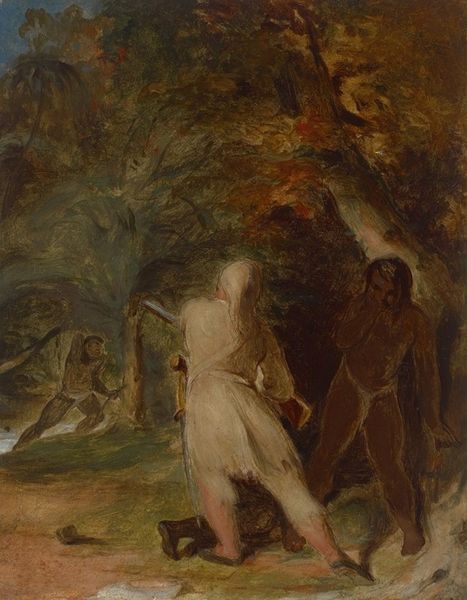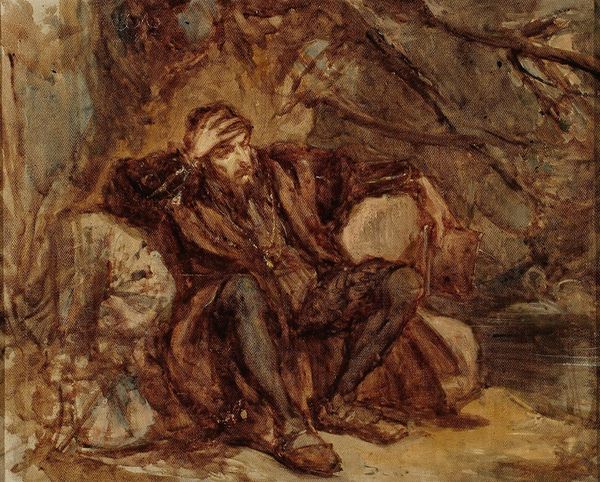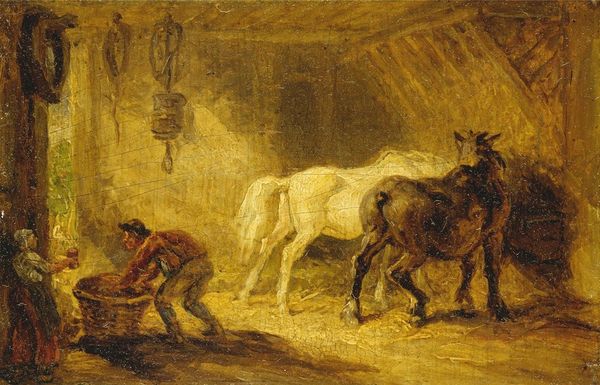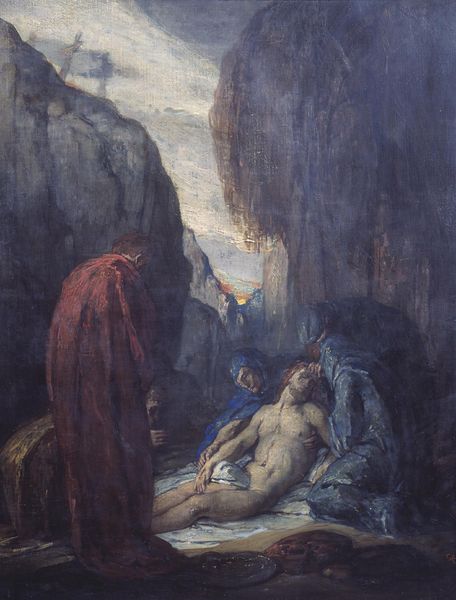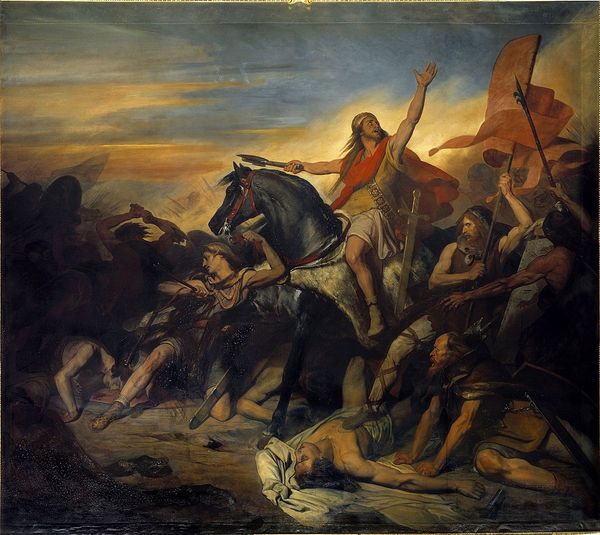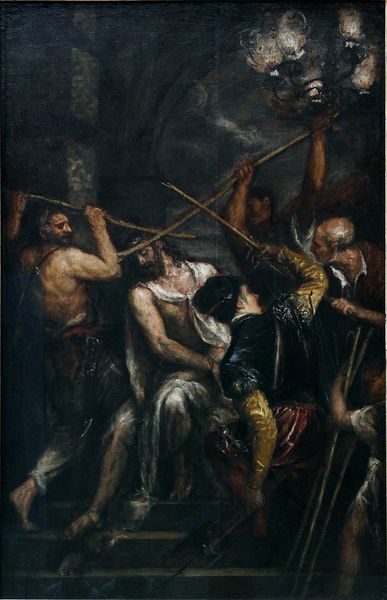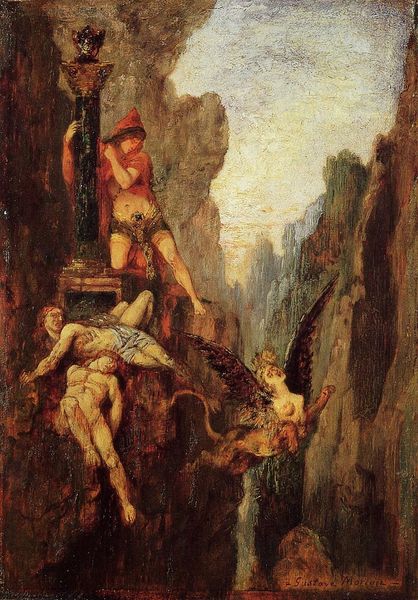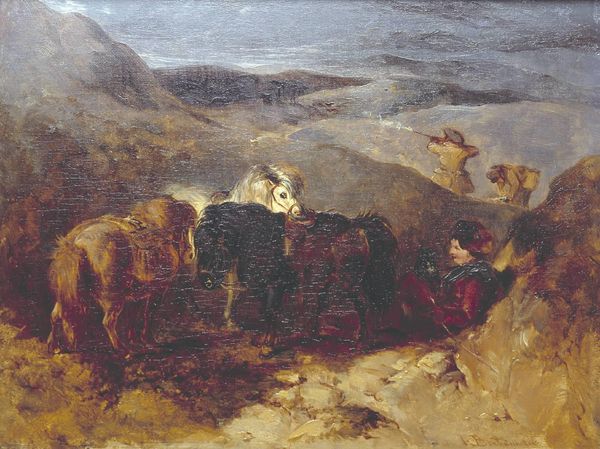
Copyright: Public Domain: Artvee
Curator: This is Honoré Daumier's "Don Quixote's Vigil," an oil painting dating from around 1855-1856. What are your initial thoughts? Editor: The mood is immediately striking. It's somber, almost desolate. The limited color palette, mostly dark browns and greys, reinforces a sense of isolation. The figure seems trapped in a psychological drama as much as a physical one. Curator: Absolutely. Daumier was deeply engaged with the sociopolitical landscape of his time, using art as a form of commentary. Don Quixote, in this context, isn’t just a character from a novel, but embodies the idealism and, perhaps, the futility of fighting against societal norms and injustices. Editor: That's a compelling reading. I wonder if the way the light falls – dramatically highlighting the figure while leaving much of the background in shadow - speaks to that. It’s like a spotlight on a lone dissenter. Curator: Precisely. Considering Daumier's republican leanings and his caricatures critiquing the bourgeoisie, it's likely that he saw something of himself, or at least his values, in Quixote's quixotic struggles. He created numerous artworks representing episodes from the story and using its protagonists as stand-ins to deliver commentary on the establishment. Editor: So the narrative becomes a vehicle for expressing contemporary social critiques, effectively layering Cervantes' story with Daumier's own context. And what do you think this says about the function of museums at the time it was made? Curator: A vital question. In displaying images like this, the art world opens a dialogue—even if contested—on narratives and philosophies that would question the reigning status quo, offering itself as a forum for change, or at least for the contemplation of possible societal change. Daumier places these figures at odds within the establishment as symbols of the potential failures and disillusionment that may await those challenging traditional order. Editor: That’s fascinating. The painting's political undertones invite us to reconsider art's place in challenging dominant power structures, and the price one often has to pay for doing so. It gives you pause. Curator: It certainly does. It reminds us that artistic expression can be both a powerful tool for change and a mirror reflecting the complexities of the human condition, encouraging us to continue asking critical questions about our world.
Comments
No comments
Be the first to comment and join the conversation on the ultimate creative platform.

